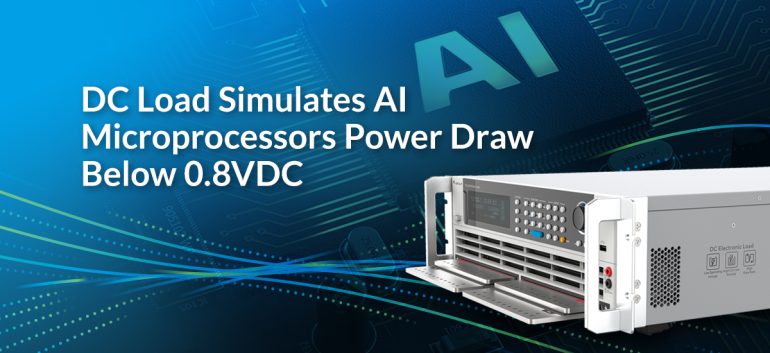- Chroma introduces a new ultra-low voltage DC electronic load for AI microprocessor testing.
- The model 63202A-20-2000 offers precision testing capabilities for applications of up to [email protected] and [email protected].
- It is designed to simulate the loading characteristics of AI microprocessors and testing voltage regulator modules (VRMs), voltage reduction devices (VRDs), and POL converters.
- The instrument features a current range of 0.2VDC to 20VDC, catering to a wide range of devices including embedded DC2DC converters and fuel cells.
- Its unique front copper busbar design minimizes inductance and reduces cable losses, ensuring optimal testing conditions.
- The 63202A-20-2000 comes with advanced features such as CC dynamic frequency up to 25kHz, user-defined waveforms, and standard USB connectivity.
- Optional Ethernet and GPIB interfaces are available for diverse testing environments and requirements.
Main AI News:
Chroma, a leading provider of test and measurement solutions, has announced the launch of its latest innovation – an ultra-low voltage DC electronic load tailored specifically to meet the rigorous demands of AI microprocessor testing. The new instrument, designated as the model 63202A-20-2000, offers unprecedented capabilities, simulating power draw below 0.8VDC with remarkable precision and reliability.
Engineered to address the evolving needs of the industry, the Chroma 63202A-20-2000 is equipped to handle applications requiring up to [email protected] and [email protected]. This makes it an ideal solution for testing voltage regulator modules (VRMs), voltage reduction devices (VRDs), and POL converters, crucial components in the operation of AI microprocessors.
One of the standout features of the new electronic load is its expansive current range, spanning from 0.2VDC to 20VDC. This versatility enables comprehensive testing of embedded DC2DC converters, fuel cells, and various low voltage – high current devices. Moreover, the instrument boasts low voltage operation capabilities down to a few hundred millivolts at reduced current levels, ensuring thorough testing across a wide range of operating conditions.
Designed with user convenience and performance in mind, the 63202A-20-2000 incorporates a unique front copper busbar design, which minimizes inductance and reduces cable losses when connecting to the Unit Under Test (UUT). This, coupled with industry-leading slew rates and ultra-low operating voltages, ensures optimal testing conditions for advanced processor simulations. Additionally, Chroma offers optional low inductance cables, further enhancing the instrument’s utility and flexibility.
The Chroma 63202A-20-2000 comes equipped with a host of advanced features, including CC dynamic frequency up to 25kHz, user-defined waveforms, and standard USB connectivity. Optional Ethernet and GPIB interfaces are also available, catering to diverse testing environments and requirements. With its precision, reliability, and extensive feature set, this innovative instrument is poised to become an indispensable tool for design and quality test engineers working on power devices below 1.0V.
Conclusion:
The introduction of Chroma’s ultra-low voltage DC electronic load marks a significant advancement in AI microprocessor testing technology. With its precision testing capabilities and versatile feature set, it addresses the growing demand for reliable testing solutions in the burgeoning AI market. This innovation not only enhances the efficiency and accuracy of microprocessor testing but also underscores Chroma’s commitment to driving technological progress in the industry. As AI applications continue to proliferate across various sectors, the availability of such cutting-edge testing equipment will play a crucial role in ensuring the reliability and performance of AI-driven systems, thus shaping the competitive landscape of the market.

